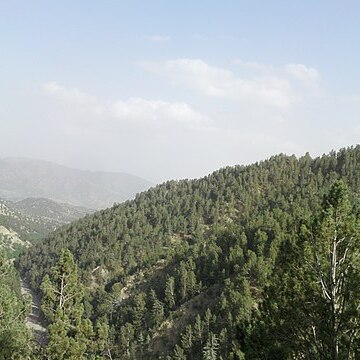A tree. It grows 15-25 m high. The bark is white and has irregular cracks. It forms into thin plates. The first year branches are pale yellow-green. There are 3 needles per bundle. They are triangle shaped in cross section. They are 6-10 cm long and stiff. The seed cones have short stalks. They are oval and 12-20 cm long by 9-11 cm wide. They are almost brown at maturity. The seed scales are 4-5 cm long. The seeds are long and round and about 2.5 cm across.


